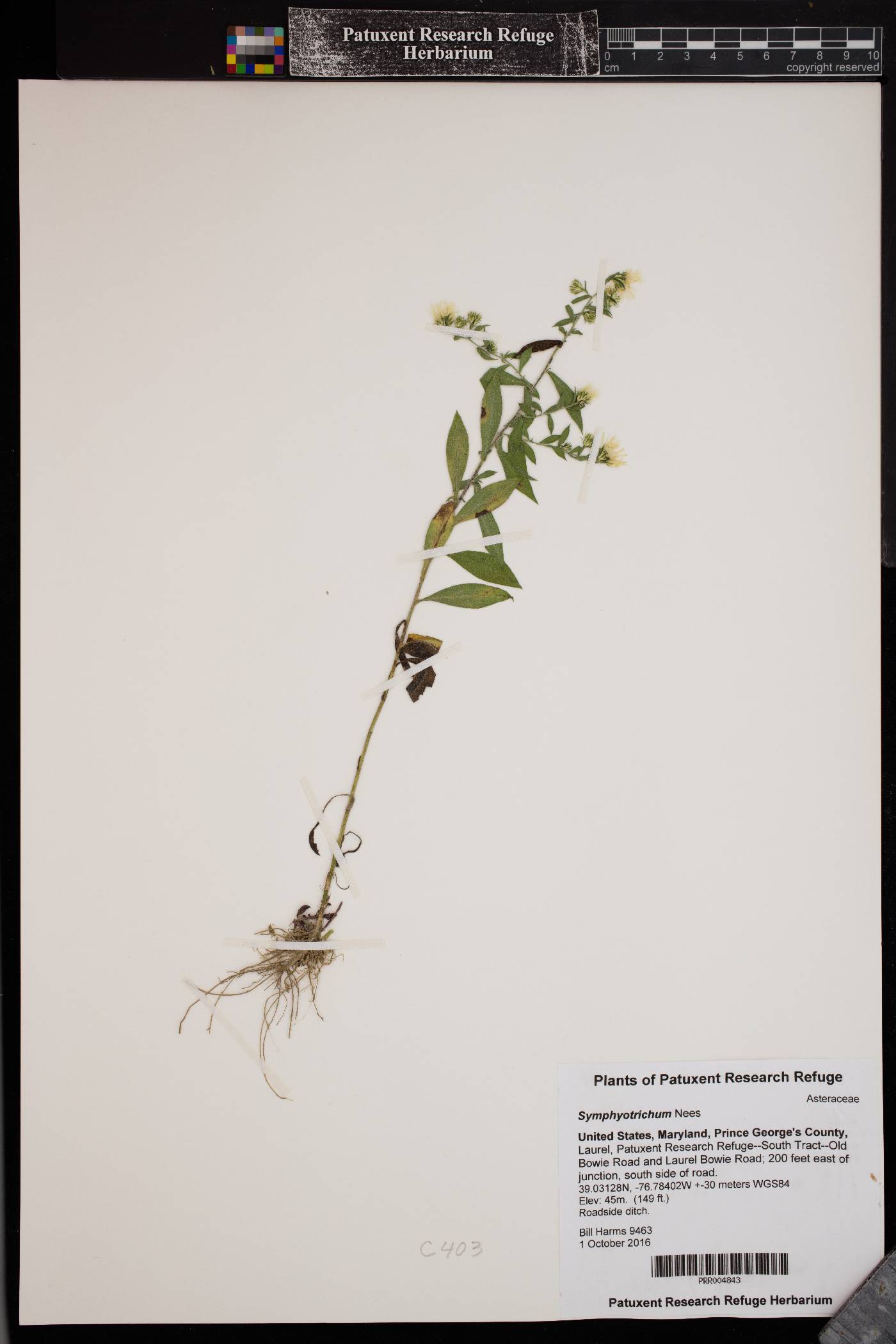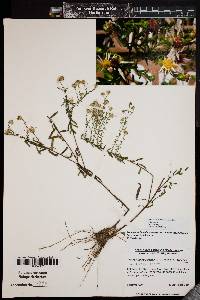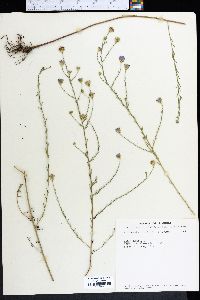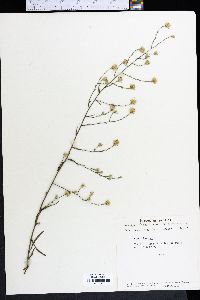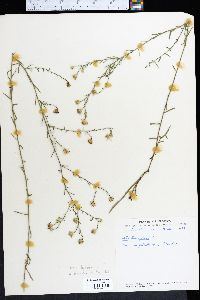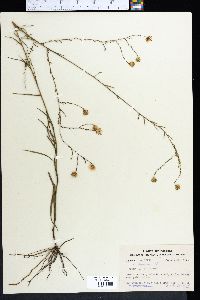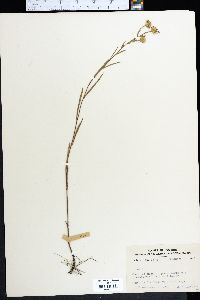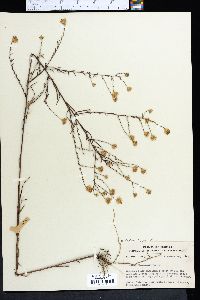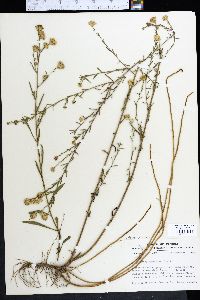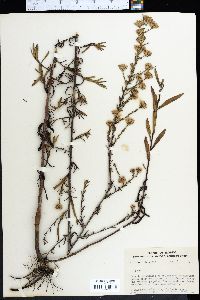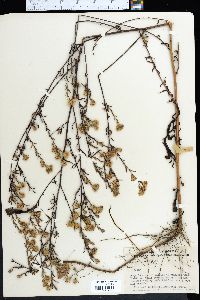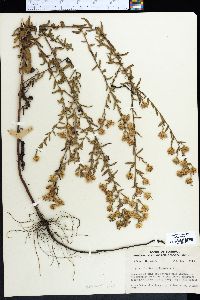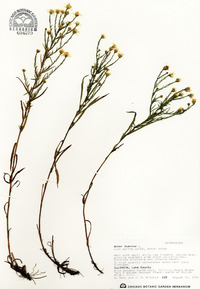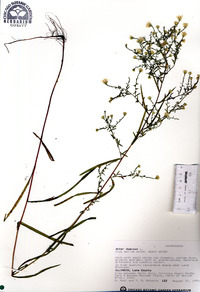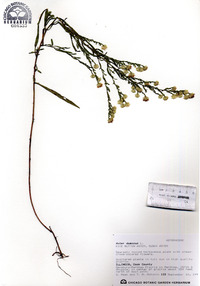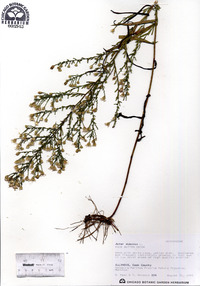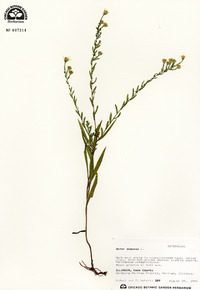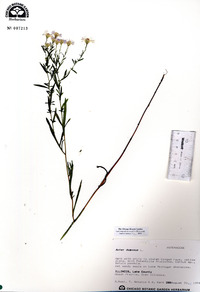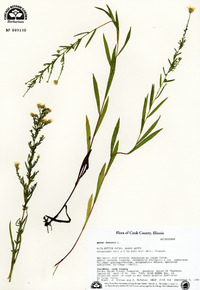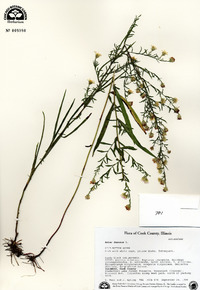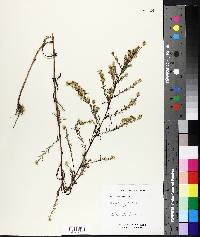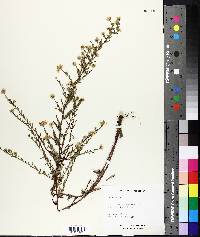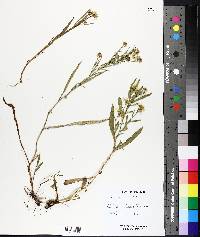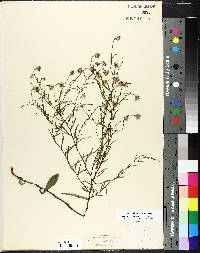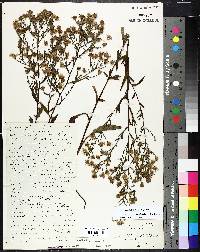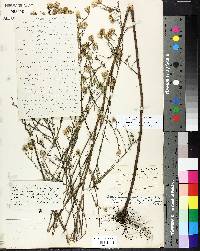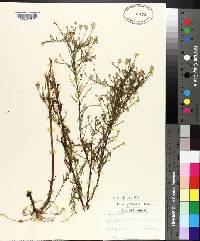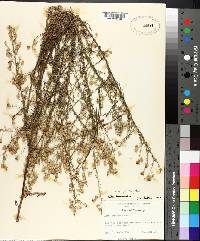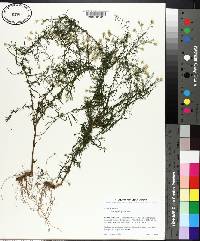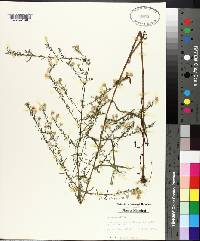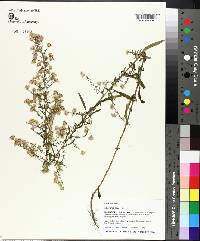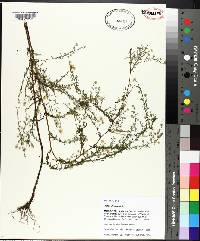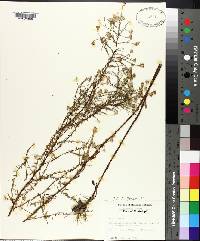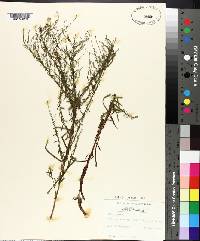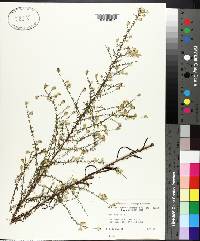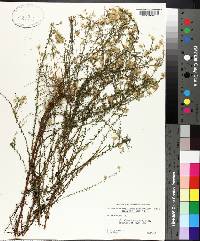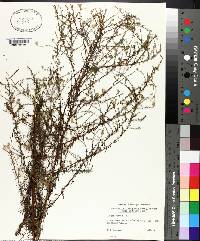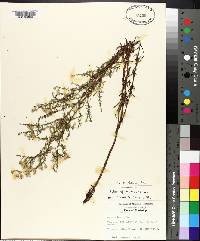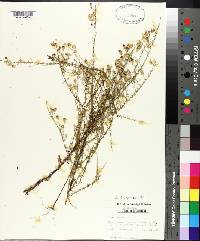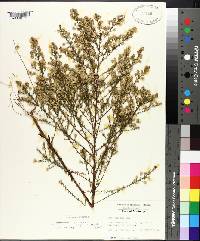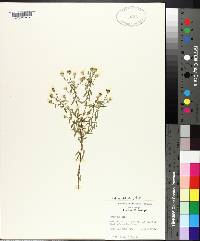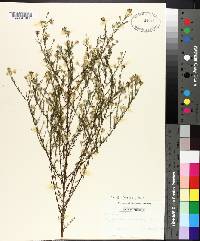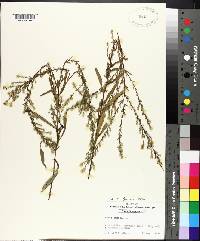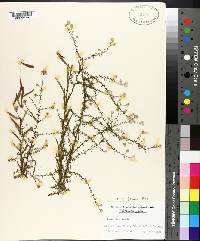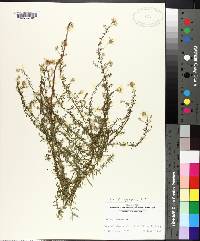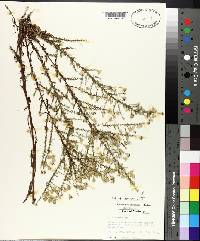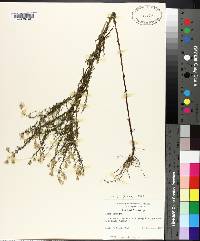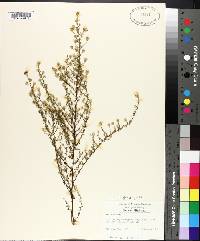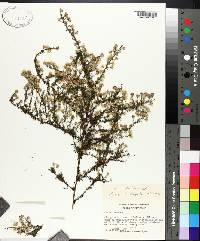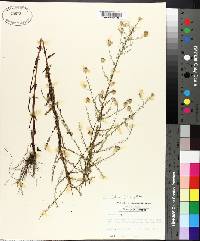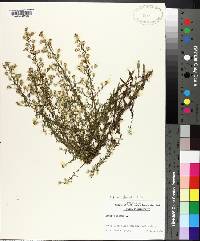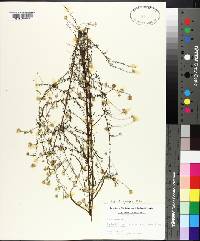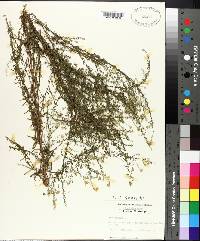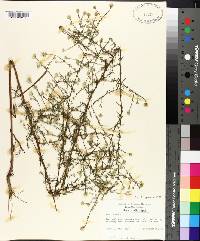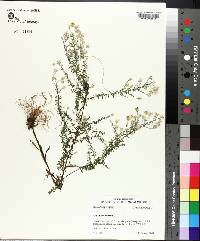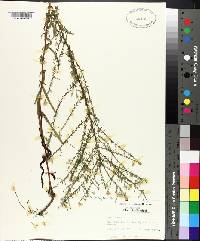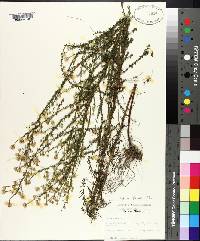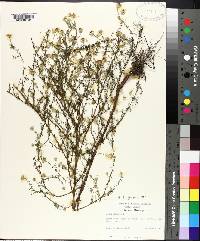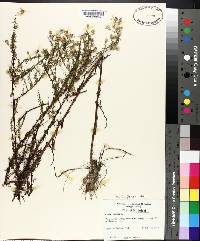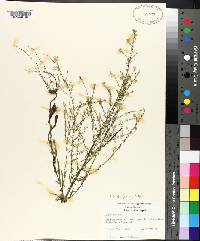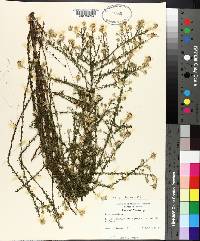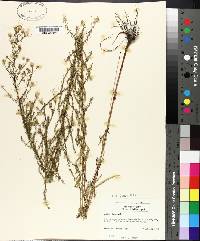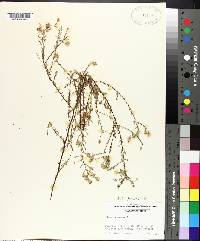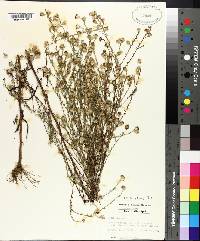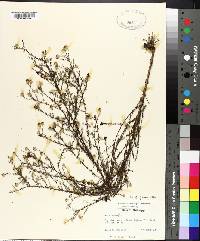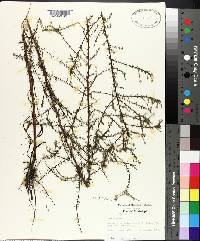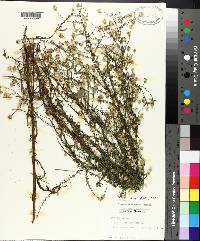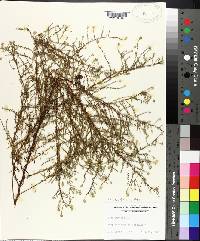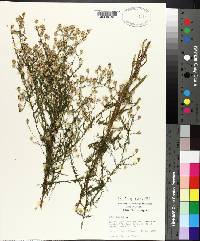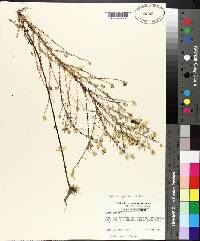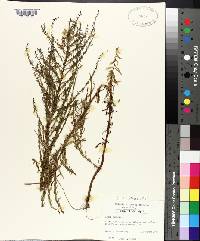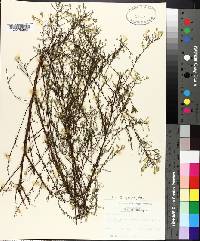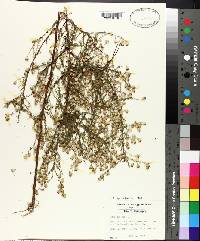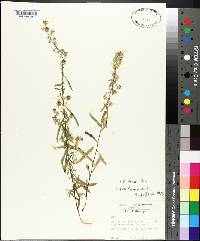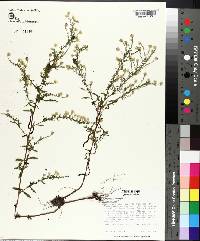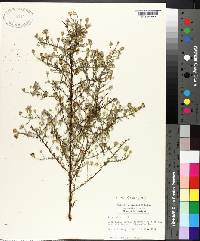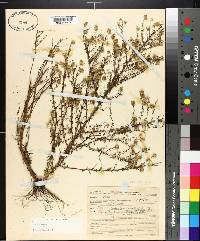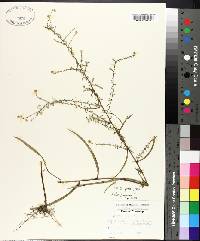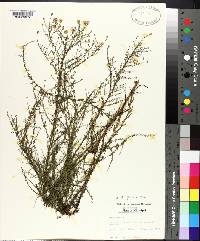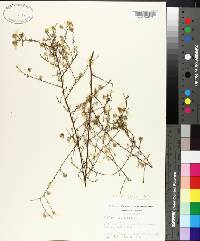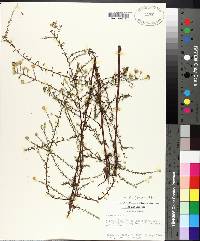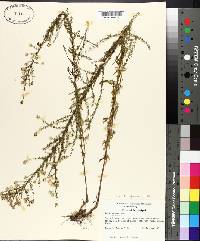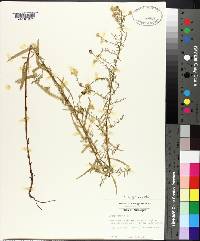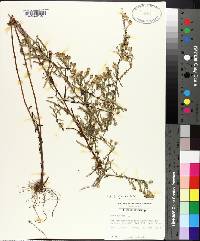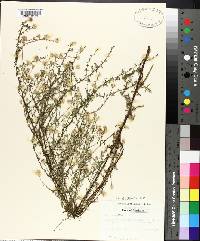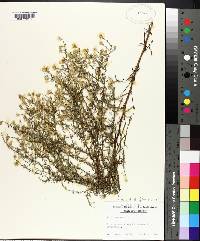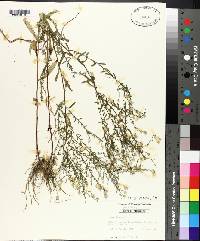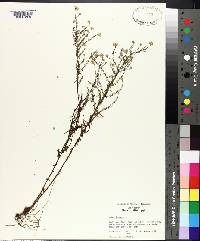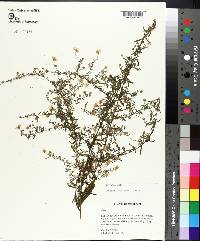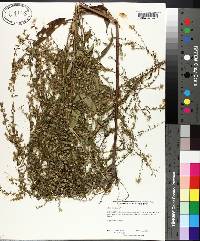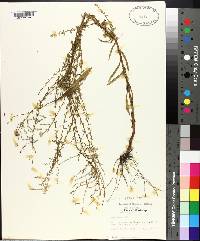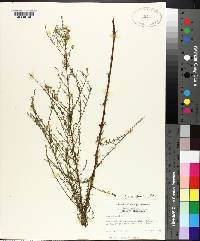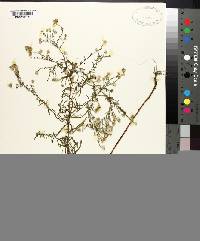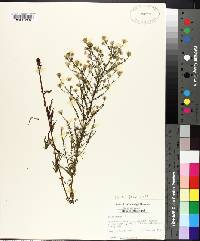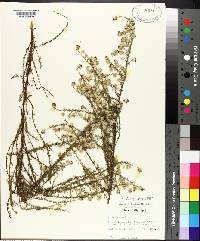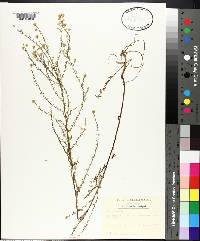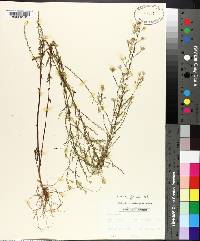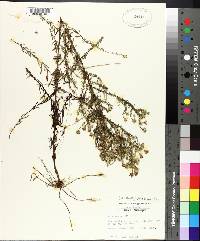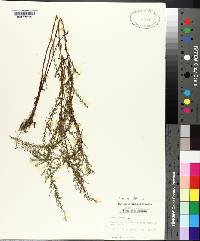Symphyotrichum dumosum
|
|
|
|
Family: Asteraceae
Rice Button American-Aster, more...rice button aster
[Aster dumosus L., moreAster luengoi Sennen] |
Perennials, (20-)30-100 cm, colonial or cespitose; usually long-rhizomatous, often thick, woody, sometimes short, or with short, stout caudices. Stems 1-5+, erect (straight, often slender, brittle), densely or sparsely strigose to glabrescent or glabrate. Leaves firm, margins entire to crenulate-serrate, recurved, scabrous, apices sharply white-mucronate, abaxial faces glabrous or glabrate to sparsely strigillose, adaxial glabrous or glabrate to submarginally scabrous (short-strigose), cauline withering by flowering (except on array branches), often with axillary leaf clusters; basal withering by flowering, petiolate, petioles winged, sheathing, strigose-ciliate, blades oblanceolate to spatulate (often declined), 8-50 × 3-15 mm, bases attenuate to cuneate, margins crenate-serrate, apices obtuse or rounded to ± acute; proximal cauline (mostly declined) subpetiolate (petioles widely winged, clasping) or sessile (then not or barely clasping), blades linear-oblanceolate, 25-120 × 1.5-9 mm, bases cuneate to slightly attenuate; distal (ascending or spreading) sessile, blades oblong or linear-lanceolate to linear, 2-45 × 0.5-4 mm, reduced distally (abruptly on branches), bases cuneate to rounded, not clasping, margins entire or serrate. Heads in remote, diffuse, open, paniculiform arrays, branches numerous, ascending to stiffly ascending, secondary ones stiff, racemiform (usually not secund). Peduncles slender, usually stiff (sometimes lax), (0.5-)1-5 cm (rarely subsessile), progressively reduced distally, usually not secund, sparsely strigillose or glabrous, bracts 5-16+, spreading to ascending, linear-oblong or -elliptic to subulate or linear, progressively reduced distally, grading into phyllaries. Involucres cylindro-campanulate, (3-)4.5-6.3 mm. Phyllaries in 4-6 series, appressed or slightly spreading, oblong-oblanceolate (outer) to linear-oblanceolate or linear (innermost), strongly unequal, bases indurate ( 1 / 2 -) 2 / 3 - 4 / 5 , margins hyaline, scarious, erose, distally ciliolate, green zones oblanceolate to elliptic (subapical), apices acute to obtuse (scarious), sometimes faintly reddish, mucronulate, faces usually glabrous, sometimes glabrate. Ray florets 15-33; corollas pale blue, pink, or lavender to white, laminae (4-)5-7(-8) × 1-1.7 mm. Disc florets 15-30; corollas cream to pale yellow turning pink, 3.5-4.5 mm, tubes shorter than to equal to narrowly Flowering Aug-Oct. Open or wooded, moist or wet soils, bogs, fens, sedge meadows, marshes, swamps, flood plains, sandy or calcareous flats, loamy prairies, old fields, sandhills, flatwoods, hammocks, pine-hickory woods, oak or pine thickets, secondary woods, sandy to mucky or marly shores of lakes and ponds, interdunal hollows; 0-700 m; N.B., Ont.; Ala., Ark., Conn., Del., D.C., Fla., Ga., Ill., Ind., Iowa, Ky., La., Maine, Md., Mass., Mich., Miss., Mo., N.H., N.J., N.Y., N.C., Ohio, Okla., Pa., R.I., S.C., Tenn., Tex., Va., W.Va., Wis. Symphyotrichum dumosum is introduced in New Brunswick. It is widely cultivated. It can hybridize with S. racemosum and S. lanceolatum var. interior (A. G. Jones 1989). G. L. Nesom (1994b) and J. C. Semple et al. (2002) recognized several varieties within the complex: var. dumosum [syn. Aster coridifolius Michaux, A. dumosus Linnaeus var. coridifolius (Michaux) Torrey & A. Gray]; var. gracilipes (Wiegand) G. L. Nesom (syn. A. dumosus var. gracilipes Wiegand); var. pergracile (Wiegand) G. L. Nesom (syn. A. dumosus var. pergracile Wiegand); var. strictior (Torrey & A. Gray) G. L. Nesom [syn. A. dumosus var. strictior Torrey & A. Gray, A. dumosus var. dodgei Fernald, S. dumosum var. dodgei (Fernald) G. L. Nesom, the latter possibly the hybrid S. dumosum × S. boreale fide G. L. Nesom 1997]; and var. subulifolium (Torrey & A. Gray) G. L. Nesom (syn. A. dumosus var. subulifolium Torrey & A. Gray). Some of these taxa may deserve higher rank. More work is needed in the complex, however, before a coherent taxonomy can be achieved. G. L. Nesom (1997) recognized also a southern pine flatwoods entity called Symphyotrichum kralii G. L. Nesom, based on the illegitimately named Aster pinifolius Alexander (not Nees, nor F. Mueller). The type of A. pinifolius, however, appears to be conspecific with that of S. simmondsii. At present, it seems best to wait for full investigation before formally recognizing such taxa.
Plants with creeping rhizomes or sometimes a short rhizome or caudex, the stems 3-10 dm, glabrous or puberulent upward; lvs linear to lance-linear or linear-elliptic, sessile, entire or nearly so, ±scabrous above, glabrous beneath, all or nearly all cauline, the main ones 3-11 cm נ3-10 mm, those of the branches much reduced; infl open, usually ample, often diffuse, the branches with numerous spreading or ascending, oblong or spatulate bracts; heads ±numerous, conspicuously long-pedunculate, the peduncles bracteate like the branches of the infl, generally at lest some of them 2 cm or more (even to 15 cm); invol 4-6(-7) mm, glabrous, its bracts strongly imbricate, with short broad green tip, tending to be obtuse, often some of them dilated upward; rays 13-30, pale lavender or bluish to sometimes white, 5-9 mm; lobes of the disk-cors comprising 20-35% of the limb; 2n=16, 32. Dry or moist, often sandy places; s. Me. to Fla., w. to Mich., Ark., and La., most commonly on or near the coastal plain. (A. coridifolius) Gleason, Henry A. & Cronquist, Arthur J. 1991. Manual of vascular plants of northeastern United States and adjacent Canada. lxxv + 910 pp. ©The New York Botanical Garden. All rights reserved. Used by permission. From Flora of Indiana (1940) by Charles C. Deam Infrequent or probably rare in the lake area of the state, where it occurs in moist, very sandy soil. I have [variety strictior with ascending, linear leaves and fewer rays] from Allen and Jasper Counties and it has been reported from Porter County on the authority of Umbach. My four specimens are from moist, very sandy soil. I have [variety strictior with ascending, linear leaves and fewer rays] from Allen and Jasper Counties and it has been reported from Porter County on the authority of Umbach. My four specimens are from moist, very sandy soil. …… Indiana Coefficient of Conservatism: C = 4 Wetland Indicator Status: FAC |

